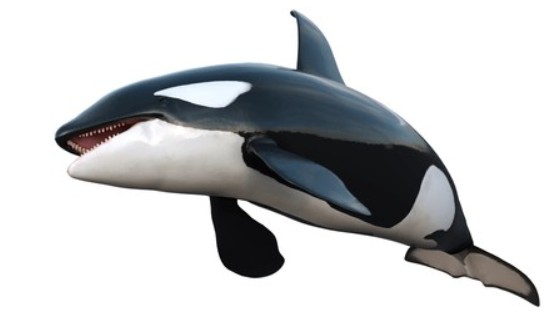Why in the News?
A new study in the Journal of Comparative Psychology documents rare instances of Killer Whales (Orcinus orca) sharing freshly killed prey with humans.

About Killer Whales (Orcinus orca):
- Overview: Largest member of the dolphin family (Delphinidae), often called “wolves of the sea”.
- Apex predators: At the top of the marine food chain.
- Physical traits:
- Black dorsal side, white underside, distinctive eye patch, saddle patch behind dorsal fin.
- Can grow up to 9 m, weigh over 5,000 kg, and swim up to 54 km/hr.
- Social structure: Live in pods led by a matriarch; highly coordinated hunters using complex tactics.
- Distribution: Found in all oceans worldwide, from polar to tropical seas, in both open and coastal waters.
- IUCN – Data Deficient: But many regional populations face threats from climate change, prey decline, and pollution.
Why do they offer their fresh prey to humans?
- Study Findings (2004–2024):
- Killer whales were observed offering whole prey to humans (fish, birds, mammals, etc.) in multiple oceans.
- In most cases, they waited for a human response before reclaiming or abandoning prey.
- Possible Reasons:
- Exploration/Curiosity: Reflects their advanced cognition and social curiosity; a way to learn about humans.
- Prosocial Behaviour: They are among the few species that share food within and outside their groups.
- Play Theory Rejected: Behaviour not limited to juveniles; adults also involved, often with whole prey.
- Scientific Thinking Analogy: Behaviour resembles “asking questions” and testing human reactions — a form of exploratory intelligence.
- Machiavellian Behaviour: Could sometimes be manipulative, as killer whales are known to steal fish and disrupt vessels.
| [UPSC 2023] Which one of the following makes a tool with a stick to scrape insects from a hole in a tree or a log of wood?
Options: (a) Fishing cat (b) Orangutan * (c) Otter (d) Sloth bear |
Get an IAS/IPS ranker as your 1: 1 personal mentor for UPSC 2024

